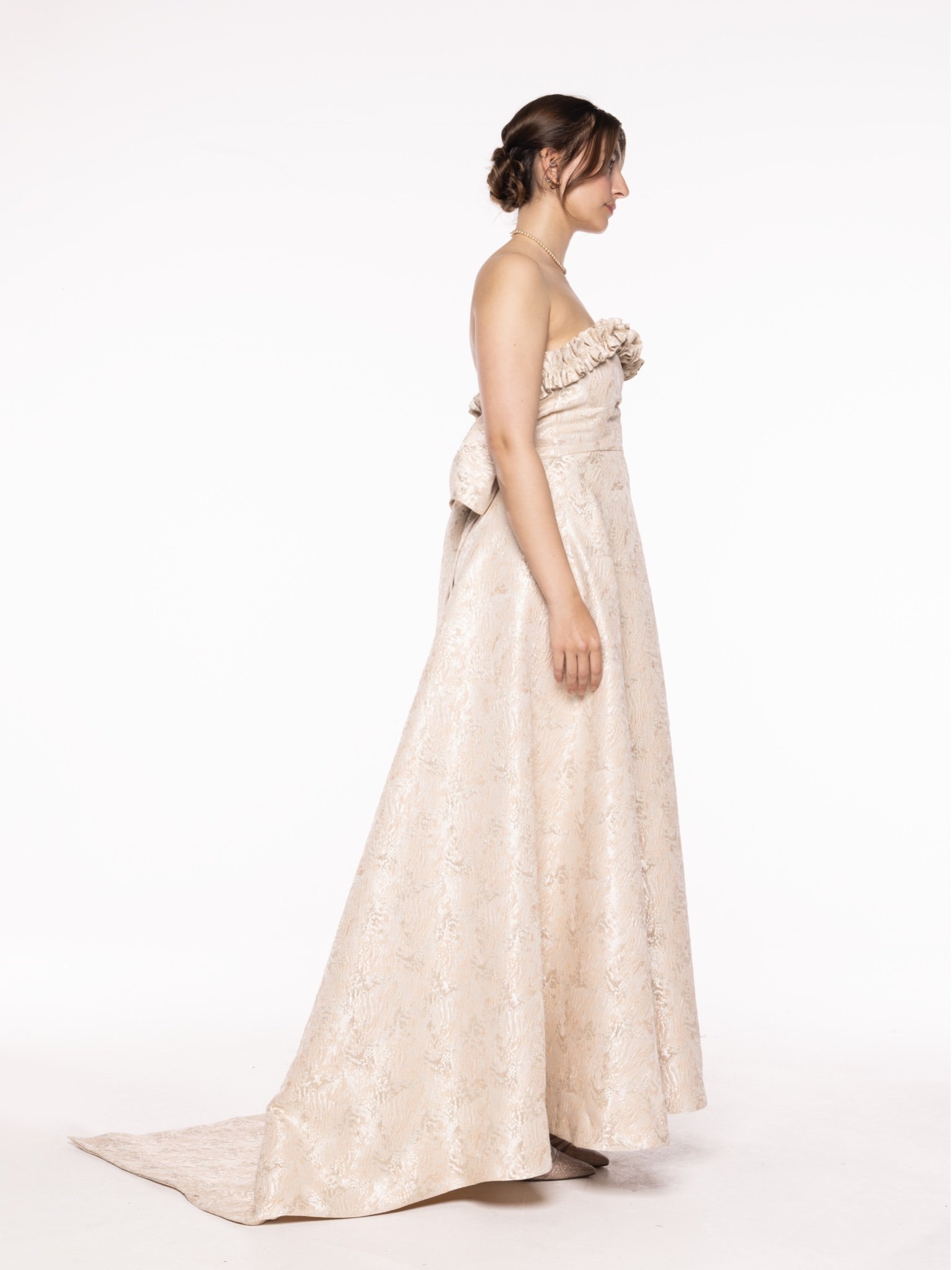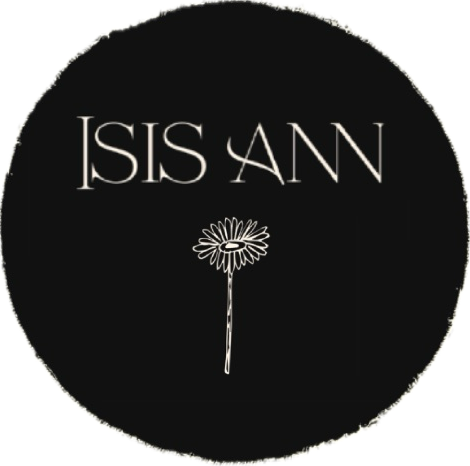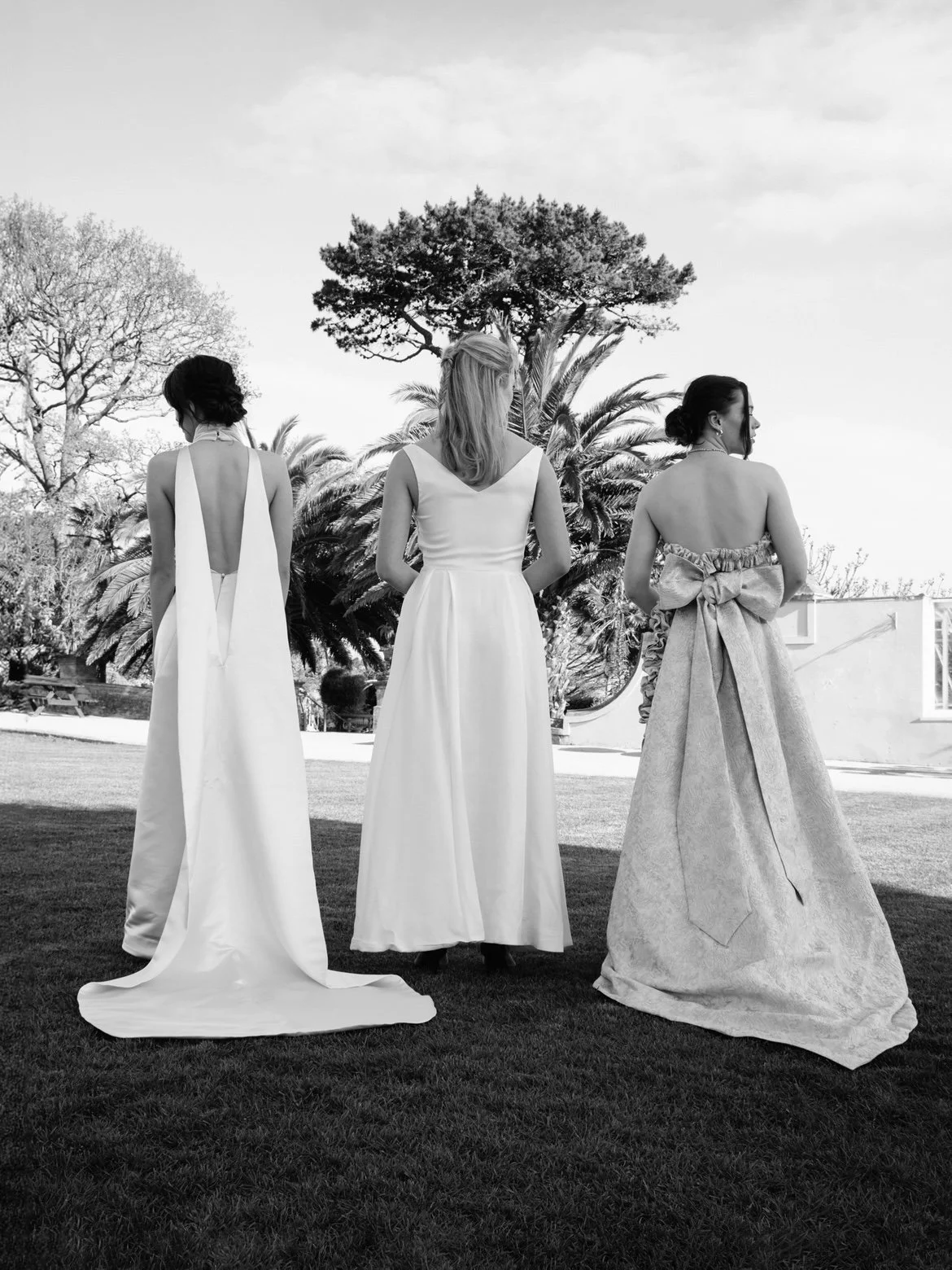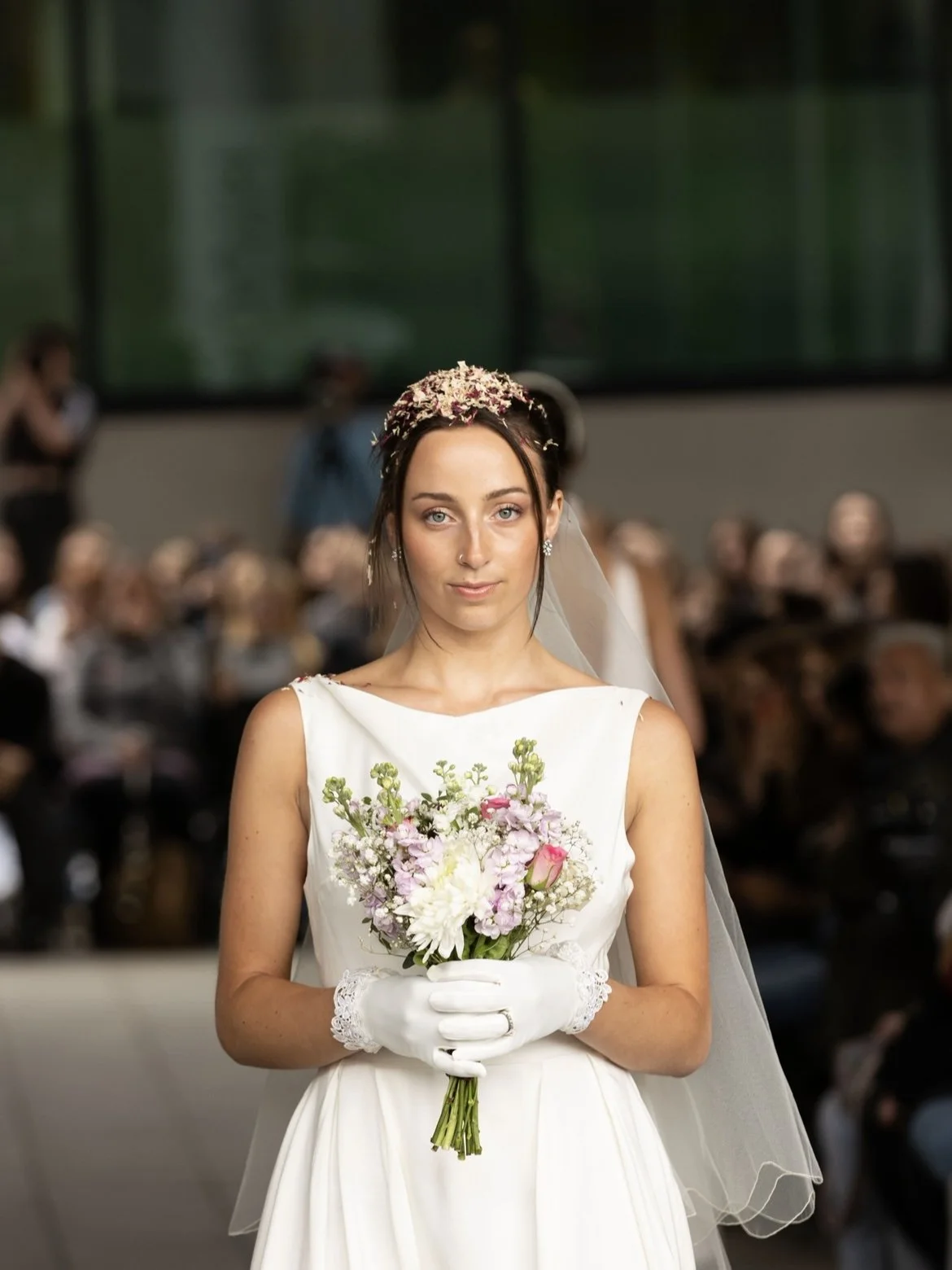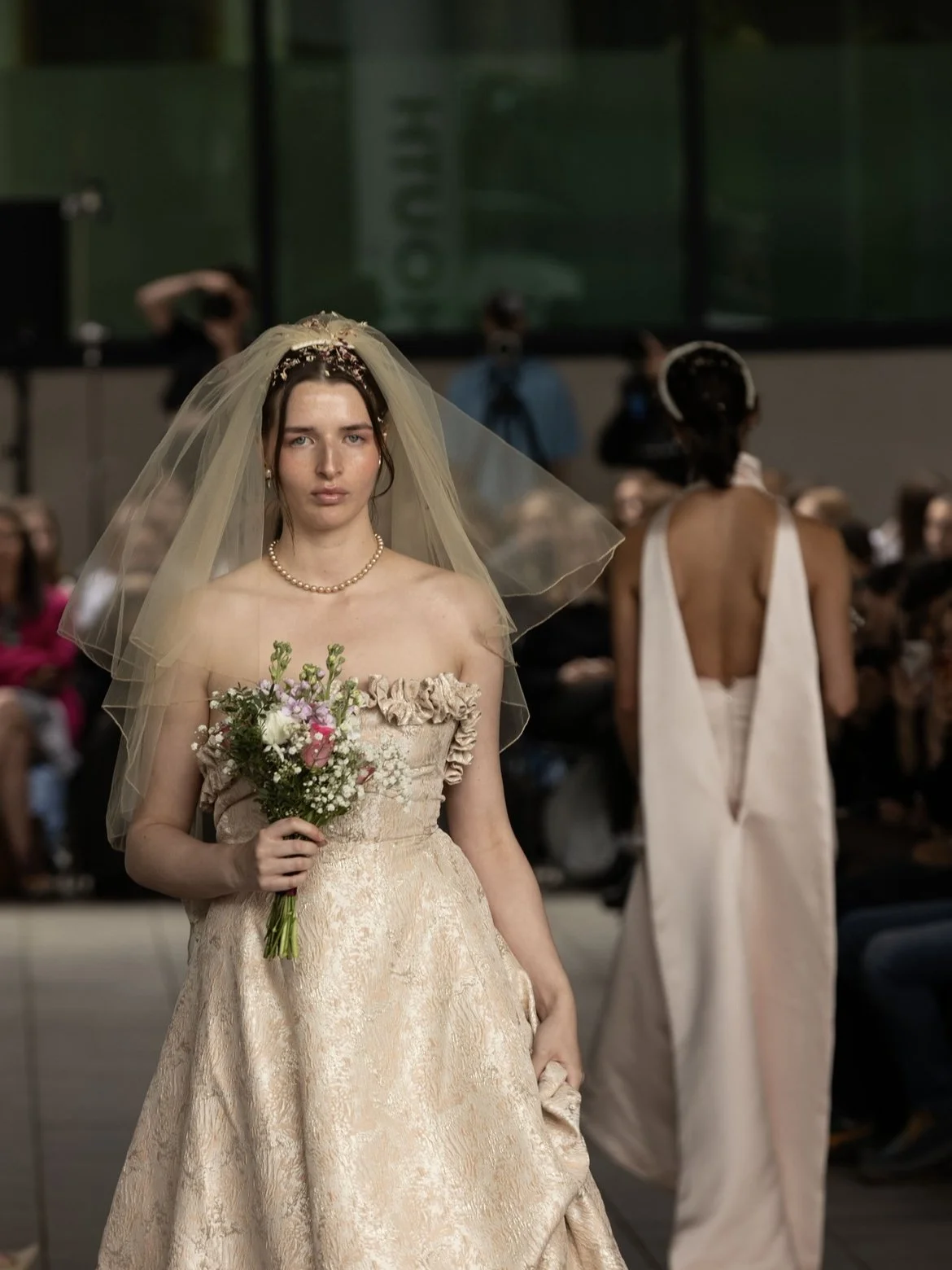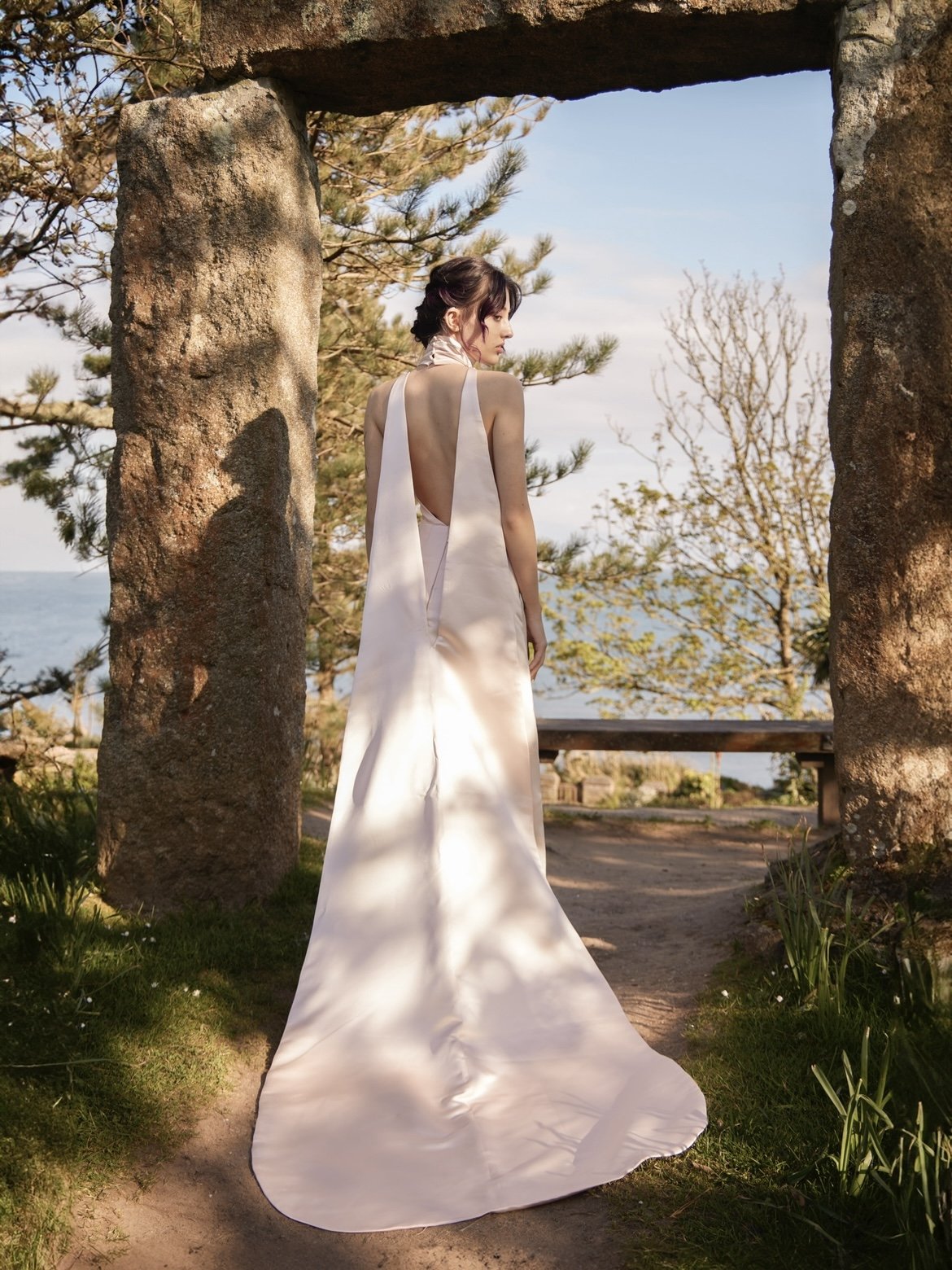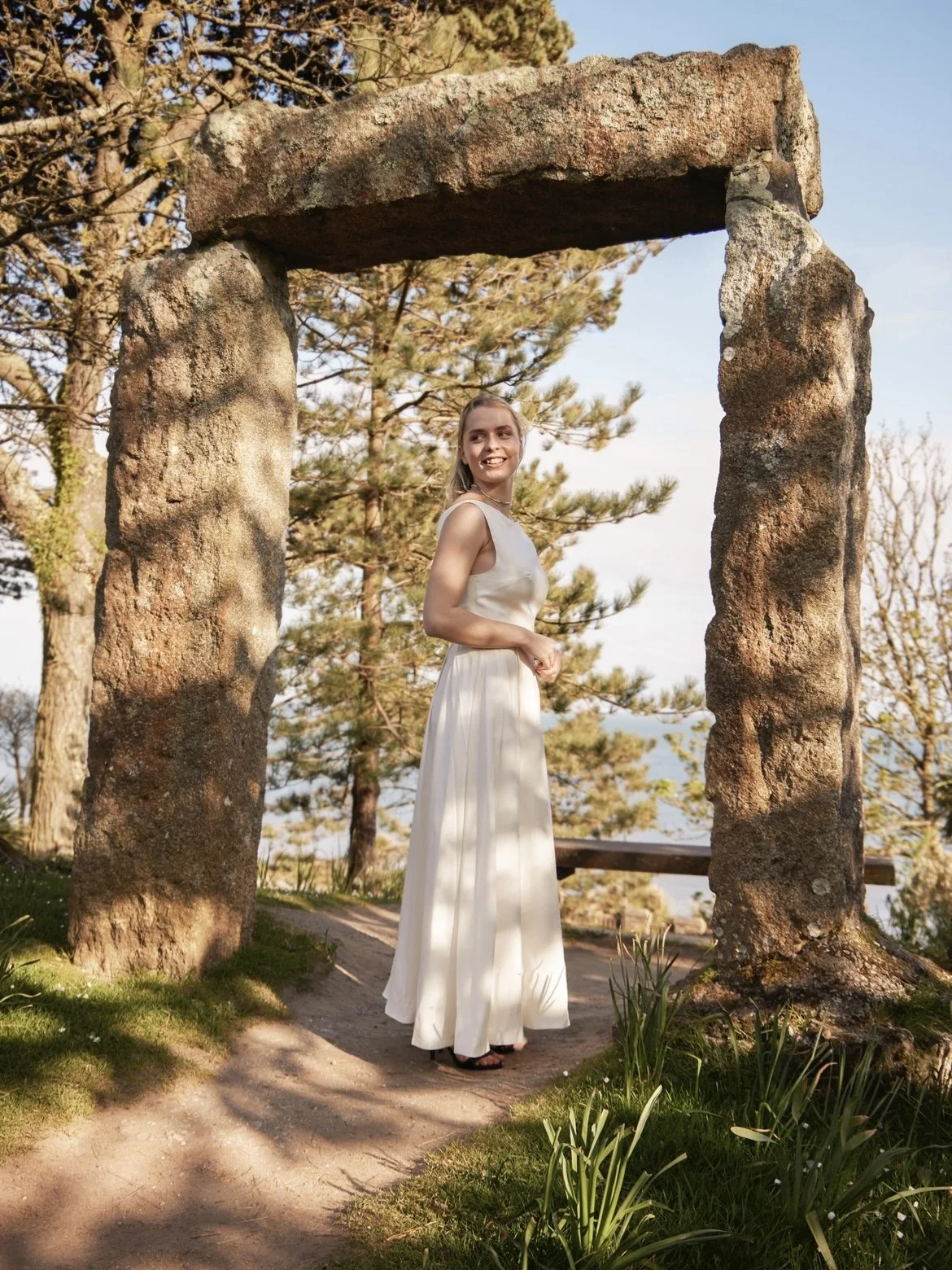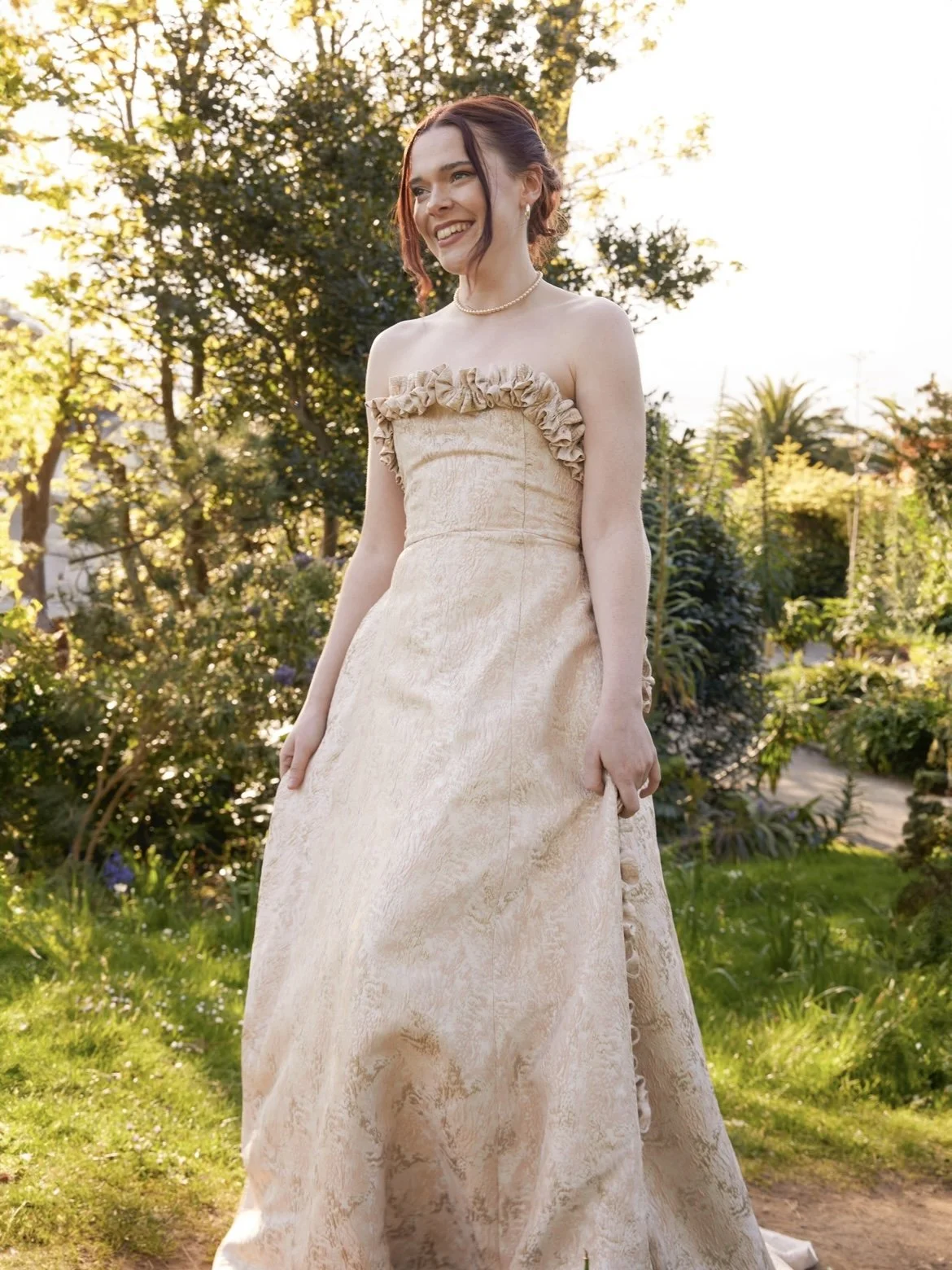IDEALISED VISIONS
CONCEPT
The Idealised Visions collection began through inspiration from how something, or someone, can be presented as perfect, or more perfect, than is true. We often romanticise and glorify an ideal, choosing to ignore the more undistinguished perspectives. By doing so, certain messages or meanings can be overlooked and hidden away underneath an idealised version of a person or garment. An item of clothing can frequently symbolise more than one different meaning, these meanings more often than not constantly evolving throughout history.
Bridal wear is a prime example of when a person desires to reflect the most beautiful version of themself. The special day is all about a magical transformation from woman to bride, that brings out inner beauty and radiance. Everything carefully chosen to enhance natural beauty and capture the essence of who she is.
My intentions for the Idealised Visions collection were to design and create bridal wear garments with classic silhouettes that look like what I believe to be an idealised vision of beauty. Each dress holding hidden symbolic meanings to both myself as the designer, and the bride. I aspired for the collection to become well-made, long-lasting items of clothing, timeless garments that make each piece past down through generations and treasured forever.
Throughout the process I have delved deep into research, looking at the hidden communications of clothing, specifically in womenswear. Specifically questioning the discreet symbolisations of bows, sleeves, ruffles and skirt lengths, examining how the meaning of these pieces have developed and changed over time. My research beginning from 2600 BC and continuing through to current day.
RESEARCH
Queen Victoria set two strong fashion trends during her lifetime: deep black for mourning and white wedding dresses. Although black has been used for morning in the Western world since Roman times, Queen Victoria propelled this trend forward, elevating it to a whole new level. Pre-Queen Victoria, royal brides wore wedding dresses in a variety of hues, the most popular colour being red. White dresses reserved for women who were being presented at court.
Queen Victoria was a fashion monger, intent on making a statement, choosing a non-traditional dress and flower crown for her wedding to Prince Albert on the 10th February 1840. She stated it was "the happiest day of my life". The dress in mention was constructed from Spitalfields cream silk-satin with a flounce of Honiton lace at the neck and sleeves. The dress consisted of a slim waist, full crinoline petticoat and lace embellishments, and is still considered the 'classic' wedding dress silhouette in the Western world today.
European leads followed this trend, as accounts of Queen Victoria's wedding spread. The new dresses were conspicuously luxurious, as laundering clothing was taxing in the 19th century and white dresses were hard to maintain. Unlike today, weckling gowns were worn several times during a lifetime, Queen Victoria herself wearing her own wedding dress for multiple other occasions. As white dresses gained popularity for weddings, they developed a new symbolism. The colour white now signifying purity, innocence and wealth. The use of white also developed due to it looking great in early black and white or sepia-toned photography.
It took a few decades for white wedding dresses to be democratised among middle class Europe and Unites States, and until this point many women just wore their nicest dress to their wedding. Society finally became more prosperous after World War II, where clothing became cheaper to produce and therefore the white, single-use wedding dress, and lavish party to show it off; became a distinctive part of getting married.
ARCHIVES
The Falmouth University Textiles and Dress Collection was an incredibly helpful resource in my research process. Looking at traditional dressmaking techniques passed down through generations helped me to develop ideas about how to finish each of the garments.
Particularly inspired by the large seam allowance on the open seams, which was deliberately incorporated into all three of the developed dress designs to allow the seams to lay flat next to the lining. Sampling included a few different kinds of traditional invisible hem stitches, exploring which type of stitch would suit the dress' needs best.
The dress designs use rouleau buttons and loops, as well as hooks and eyes or bars. A 1950's handmade wedding dress inspired me to utilise darts as features, which were specifically sewn within The Annabelle Dress and The Karly Dress.
CIRCULARITY
Isis Ann takes huge pride in embracing circular design practice, where sustainability is at the forefront. Prioritising excellent quality natural fabrics and sustainably sourced synthetic materials. Minimising waste as much as possible and promoting repairs.
Customers are encouraged to return to the company for eventual repairs. This process has been created with ease in mind, by using the signature design of the invisible hemming stitch used to attach facing to lining on all dresses and skirts.
All of the garment fastenings and added elements are sourced from quality and purpose made companies, the majority of which are locally derived companies. Specifically, the hand button covering service in Probus, Truro. All fabric companies used are United Kingdom based too, allowing for minimised shipping costs and carbon footprint.
Isis Ann delights itself in creating timeless bridal wear collections, each consisting of investment pieces that honour the inspiring research completed around many historical aspects of past fashion. Whilst I take a lot of time to thoroughly delve into the research process, I also continuously strive to develop a contemporary aspect within the design of each and every one of our garments. Aspiring fort your dress to hold special meaning to you, becoming something you and your family will treasure for a lot longer than just one lifetime.



